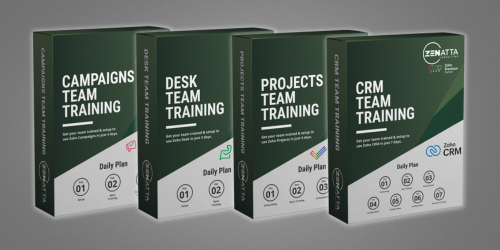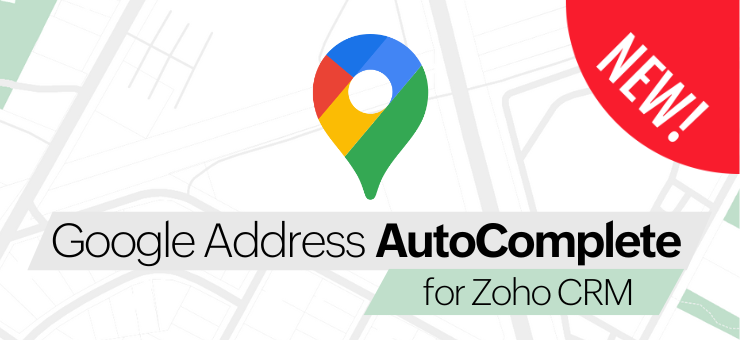Product Overview
Zoho Books is a versatile accounting software that provides businesses with a suite of tools to manage their financial health. With its intuitive interface and integration capabilities, it offers a comprehensive view of the company’s finances and operational efficiency.
In this section, let’s here is a quick overview of Zoho Books:
Home Page Overview
Upon entering Zoho Books, users are greeted with a dashboard presenting key performance indicators (KPIs) such as receivables, payables, and cash flow. This dashboard also offers updates and announcements to keep users informed about the latest features and improvements.
Product Management
Items: The platform allows users to define and manage the products or services they offer. Beyond basic listing, Zoho Books supports the creation of item groups and composite items, helping businesses manage variants or bundled products more efficiently.
Price List: A unique tool in Zoho Books, this feature lets users adjust product or service prices based on specific vendor relationships or categories, ensuring flexibility in pricing strategies.
Inventory Control: For businesses with more advanced inventory needs, Zoho Books seamlessly integrates with Zoho Inventory, allowing for enhanced inventory management and control.
Banking & Reconciliation
Bank Connections: Zoho Books supports integration with multiple banking platforms, including Yodlee and Plaid. This diversity ensures compatibility with a broad range of banks and financial institutions.
Bank Reconciliation: Regularly reconciling bank transactions is vital for accurate financial reporting. Zoho Books makes this process straightforward, further suggesting that users perform these reconciliations to catch discrepancies or duplicates.
Sales & Customer Management
Sales Tools: Zoho Books is equipped with an array of sales-related tools. From estimates and sales orders to invoices and payments, businesses have everything they need to manage their sales cycle efficiently.
Customer Module: This provides an all-in-one view of a business’s interaction with a specific customer, from comments and communication to transaction history, helping in fostering better customer relationships.
Vendor & Purchase Management
Purchase Tools: Reflecting the sales side, Zoho Books offers a mirror set of tools for managing vendor interactions and purchases.
Vendor Management: Integrated with Zoho CRM, this feature allows users to manage vendor contacts and accounts seamlessly, ensuring smooth vendor relations and purchase processes.
Time & Project Management
Time Tracking: Zoho Books includes tools for timesheet management and project tracking. For businesses that also use Zoho Projects, synchronization between the two platforms is possible, streamlining project accounting.
Accounting & Reporting
Accounting Tools: From manual journal entries and bulk transaction updates to budgeting and transaction locking, accountants have a suite of tools tailored to their needs.
Reporting: Zoho Books boasts a vast range of financial reports. With Zoho Analytics integration, users can even customize these reports, ensuring they extract the precise insights they need.
Document Management
Document Storage: For businesses looking for an organized way to store bank statements and other financial documents, Zoho Books offers a dedicated document section. This is further enhanced by an Optical Character Recognition (OCR) feature, which can automatically process and categorize documents.
Attachments: Whether it’s a receipt for an expense or an invoice, users can attach relevant documents directly to transactions, ensuring a comprehensive record-keeping system.
Employee Expense Management: Zoho Books integrates with an Expense Application, enabling employees to code and submit their expenses. This feature is especially useful for companies with multiple employees using corporate cards, simplifying the expense reporting and approval process.
Zoho Books Settings Overview
The settings menu in Zoho Books has undergone significant changes over time. Although the new interface offers a more organized and detailed view, users accustomed to the previous layout might find it a bit challenging initially. This guide provides a comprehensive walkthrough of the updated settings feature.
Accessing Settings: The settings icon, located in the upper right-hand corner, provides direct access to Zoho Books settings. While some might find the new organization of the settings less intuitive initially, with time, it proves to be comprehensive.
Organization Settings:
- Company Profile: This is where you input basic company details such as the name, address, and email.
- Warehouses: For businesses operating with multiple storage facilities, Zoho allows you to set them up, or if you’re using Zoho Inventory, you can integrate it here.
- Branding: This section enables businesses to customize their domain, ensuring a personalized touch for clients and vendors.
- Currencies: Depending on your operations, you might deal in various currencies. This section provides settings for currency exchanges, custom feeds, and other related adjustments.
- Approvals: Sales, purchase, and inventory approvals can be enabled or customized here. For instance, the new feature allows for inventory approval, ensuring better control over inventory adjustments.
- Opening Balances: For businesses transitioning to Zoho or needing to adjust balances, this section allows you to set and modify opening balances.
- Subscription Management: This part pertains to the management of your Zoho Books subscription.
Tax and Compliance:
- Taxes: While businesses can manually input tax, integrating with Avalara provides an automated solution, especially for companies operating across various regions with different tax rates.
Preferences:
- General Preferences: Choose which modules to enable based on your needs.
- Customer and Vendor Preferences: This section allows for customization of details related to customers and vendors, like duplication, credit limits, and more.
- Field Customization: Custom fields, buttons, and related lists can be created and managed here for better data capture and organization.
- Accountant: You can modify what your accountant can access and see in this section, including vendor advances, customer advances, and more.
Projects:
- Field Customization: Customize fields specific to projects within Zoho Books, separate from Zoho Projects.
- Time Sheet Customization: For businesses tracking time, this section offers tools for capturing and organizing timesheets.
- Portal Customization: Zoho Books provides both customer and vendor portals for improved interaction. Customization of these portals can be managed here.
Items:
- Item Customization: Items, whether products or services, can be further customized in terms of dimensions, weight, SKU, UPC, and more.
Sales:
- Sales Customization: For a consistent sales process, Zoho Books offers customization options for estimates, invoices, and sales orders. This section ensures your sales documents align with your business needs.
Sales and Settings:
- Sales Orders: Modify sales order cycles and connect with multiple sales channels, including Amazon, Etsy, eBay, and Shopify.
- Inventory and Packages: Introduce custom fields for both packages and shipments to better tailor your inventory management.
- Invoice Customization: Choose how recurring invoices are handled, whether generated as drafts or immediately sent out.
- Payments & Credit Notes: Design with custom fields, buttons, and related lists. Opt for cost price preferences, QR code generation, and record locking for credit notes.
- Delivery Notes & Packing Slips: Customize the content of your delivery notes to ensure customers receive essential information.
Purchase and Settings:
- Expenses: Add vehicles, manage mileage, and set up default expense categories. Zoho’s pre-populated federal mileage guidelines can be tailored to individual needs.
- Reminders & Notifications:
- Automate overdue invoice reminders. Customize templates to reflect your company’s communication style.
- Adjust email notifications, from portal invites to timesheet updates, ensuring every communication is on-brand.
Users & Roles:
- Create specific roles and designate permissions. Whether granting access to invoices or restricting financial insights, Zoho offers granular control.
Customization:
- With “tags”, categorize products and vendors, aiding in detailed reporting.
API & Integration:
- Zoho ensures compatibility and connectivity with other platforms, enhancing its utility. Users can integrate third-party tools or design custom solutions using Zoho’s robust API.
Chart of Accounts Overview
The Chart of Accounts is essentially the backbone of your financial system. It categorizes all financial transactions, from your various income streams to expenses, assets, and more. This provides clarity and order to the financial structure of any organization, allowing for accurate reporting and analysis.
Key Points:
- Pre-configured Account Types: Zoho Books has already set up most of the essential accounts you’ll need – covering income, expenses, cost of goods sold, and other assets.
- Edit and Delete: Accounts with a gear icon can be deleted or edited. If they have a lock symbol, they’re permanent fixtures of the system, meaning you can’t remove them, even if they aren’t in use.
- System Accounts: Locked accounts, indicated by the lock symbol, are system-provided. These are accounts tied to specific automated actions. For instance, bank fees and charges related to payments accepted will automatically reflect in the ‘Bank Fees and Charges’ account.
- Renaming Flexibility: Though system accounts are fixed in their function, you can rename them. For instance, the ‘Revenue’ account’s name can be changed to better align with your operations, but its function remains consistent.
- Customization:
- While Zoho provides many pre-configured accounts, a common area for detailed customization is expenses. You can become as granular as you want, but a more straightforward approach is often recommended.
- Zoho allows for the creation of sub-accounts, providing further granularity. For example, under ‘Automobile Expenses’, you might have sub-accounts like ‘Gas’ or ‘Maintenance’.
- Adding New Accounts: Setting up a new account is straightforward. You choose the type of account, name it, and even have the option to set it as a sub-account. Account codes (general ledger codes) are optional but can be included for detailed tracking.
- Simpler is Often Better: While it might be tempting to micro-manage and create a multitude of accounts, it’s beneficial to remember the principle of simplicity. An overly complex Chart of Accounts can be cumbersome and counter-productive. Instead of a multi-page profit and loss statement, a more consolidated version can provide a clearer view of an organization’s financial health.
The Chart of Accounts serves as a structured representation of a company’s financial transactions. With Zoho Books, users are equipped with a variety of tools to customize this representation, but it’s often recommended to maintain simplicity for clarity and ease of use.
Next, let’s dive into the sales aspect.
Sales Process:
The Sales Process in Zoho offers a comprehensive flow, ensuring efficient tracking and management of sales activities. Here’s an overview of the main functionalities:
- Preferences Customization: Tailor the platform to your company’s needs by adding or removing preferences. The side-menu can be adjusted based on the processes you use.
- Estimates: Zoho provides a flowchart for users to understand transactions. Users can capture this flowchart for future reference. After creating an estimate, there’s an option to initiate a retainer invoice.
- Sales Orders: Convert estimates into sales orders. This includes automatic numbering, pulling estimate references, and the ability to add manual shipment dates. Sales orders can also be adjusted for discounts or additional charges.
- Packaging & Shipping: After confirming an order, users can create a package, including the packing slip. Shipments can be managed manually or through integrations, offering tracking, status updates, and notifications.
- Invoicing: Post-shipping, users can convert sales orders into invoices. These invoices can accommodate adjustments, custom thank-you notes, and various payment options.
- Payment Integration: Record payments manually or through integrated gateways. The platform tracks payment methods, whether online or physical checks.
- Recurring Invoices: For businesses with recurring billing, Zoho offers a feature to create and manage invoices automatically.
- Sales Returns: For product returns, Zoho has a dedicated feature. Users can issue a credit note or process a refund, depending on the return’s nature.
Zoho’s Sales Process functionality ensures streamlined operations, allowing businesses to efficiently handle sales, invoicing, shipping, and returns with ease.
Purchase Process in Zoho
Books has intricately woven a purchase process that caters to various aspects of business dealings. From raising purchase orders to recording payments, it encompasses a robust sequence ensuring ease of transactions and management. Dive into the following functionalities:
- Purchase Orders: Zoho provides a visual flowchart to guide users. You initiate by raising a purchase order, receiving goods, and converting it into a bill.
- Inventory Management: Upon receiving goods, they’re categorized as physical inventory. Once a bill is paid, they transition into accounting inventory.
- Vendor Interaction: Users can select a vendor, input items (e.g., 20 widgets), and apply any upfront discounts or adjustments. Like sales orders, there’s an option to email the point of contact for the vendor directly.
- Bill Management: Purchase orders can be converted into bills. If billed upfront, users can save the status as open and subsequently record payments.
- Payment Integration: Payments can be made through integrations such as Forte or traditional check methods. After payment, the bill status updates to ‘paid’.
- Recurring Bills: Zoho offers automation for recurring bills, similar to recurring invoices. This is useful for periodic payments, like monthly rent.
- Vendor Credits: If products are returned or damaged upon receipt, users can create vendor credits. These credits can be applied to future bills or recorded as refunds.
- Expense Management: The expense feature connects to bank feeds, categorizing expenses as they’re made. Integration with Zoho Expense can automate categorization.
To sum up, Zoho’s Purchase Process is a comprehensive solution for businesses, ensuring an organized way to manage purchases, payments, and associated tasks. Whether you’re a small business or a large enterprise, it offers tools and integrations to make the purchase journey smooth and efficient.









